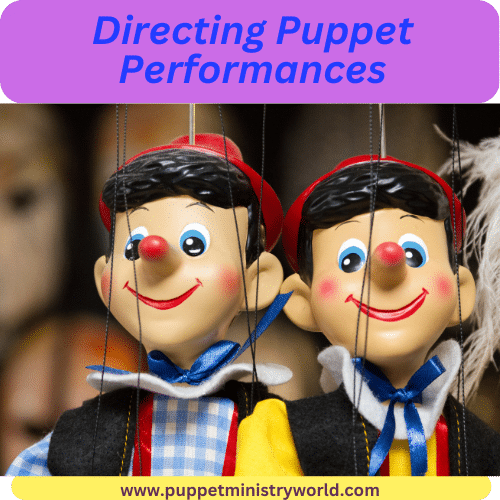Directing puppet performances is an important aspect of creating engaging and entertaining
shows.
A good director can help to bring the puppets and characters to life, and create a memo-
rable experience for the audience. Here are some steps that can guide you through the process
of directing puppet performances:
Understand the script:
Before you start directing the performance, it’s essential to understand
the script. This means reading it thoroughly and getting a good grasp of the characters, plot, and
themes of the performance.
Cast the puppets:
Once you have a good understanding of the script, cast the puppets for the
performance. This means choosing the right puppets for the right roles, and making sure that
they are able to perform the actions and dialogue as written in the script.
Choreograph the movements:
Choreograph the movements of the puppets to create a believable
and expressive performance. This means planning out the puppet’s movements, such as walk-
ing, gesturing, and facial expressions, in relation to the script.
Rehearse:
Once the puppets are cast and the movements are choreographed, rehearse the perfor-
mance. This is a great opportunity to make sure that the puppets are able to perform the actions
and dialogue as written in the script, and to make any necessary adjustments.
Set design and lighting:
Set design and lighting play an important role in the overall feel and
atmosphere of the performance. Work closely with the set designer and lighting technician to
create the desired look and feel for the performance.
Block the performance:
Once the set is designed, block the performance. This means planning
out the movements of the puppets and the positioning of the puppeteers on stage, in relation to
the set and lighting. This will ensure that the performance flows well and that the audience has a
clear view of the puppets and their movements.
Cue and direct the performance:
During the performance, cue and direct the puppeteers and
other members of the crew. This means giving them the cues they need to start and stop the per-
formance, and making sure that the performance is running smoothly.
Make adjustments:
As the performance progresses, make adjustments as needed. This could in-
clude making changes to the puppets’ movements, dialogue, or lighting, in order to improve the
overall performance.
Evaluate and reflect:
After the performance, evaluate and reflect on the performance. Take note
of what worked well and what didn’t, and use this feedback to improve future performances.
Directing puppet performances requires creativity, attention to detail, and a thorough under-
standing of the script, puppets, and performance. With practice and patience, anyone can learn
the basic principles of directing and create engaging and entertaining puppet performances that
can be enjoyed by people of all ages and backgrounds. Additionally, it is important to work
closely with other members of the team such as puppeteers, set designer, lighting technician,
and sound designer to create a cohesive and well-rounded performance.

